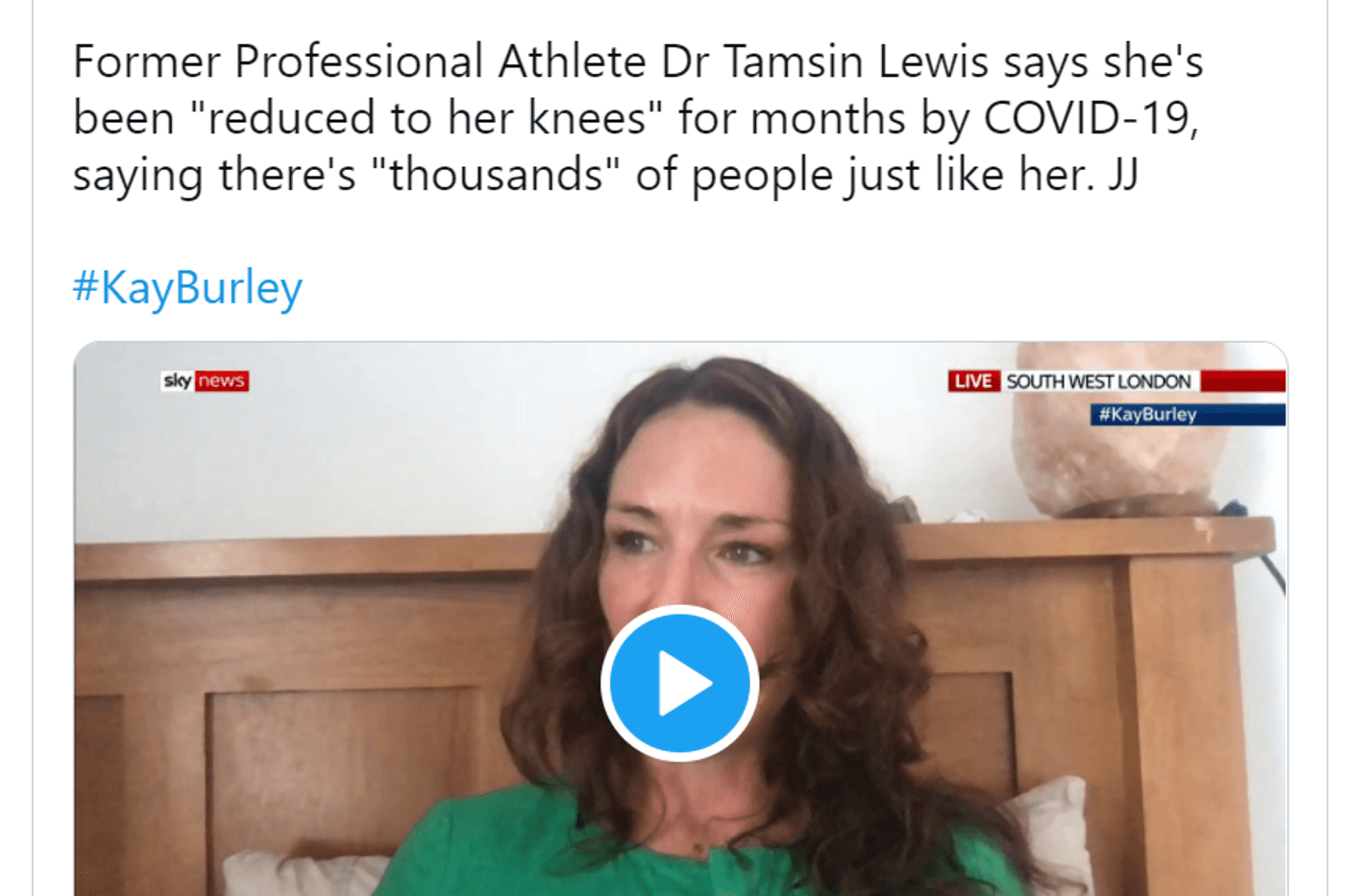Sounds too good to be true, right?
Well, it does take work. And planning. And a little luck.
But yes, you really can land your travel business a spot on TV – and in this post, our expert travel PR team reveals their top tips on how to get clients on national news programmes.
Research and plan
TV moves fast. But while you can pitch on the day, it’s often too late by then.
TV news desks usually work a day or two, sometimes three, in advance. Lifestyle shows can run to longer schedules, but are often affected by the news cycle, too. Either way, your preparation and research should begin far sooner – using knowledge in your sector and upcoming events in the calendar.
Here’s an example: for our Portuguese client Martinhal Resorts, we knew that Portugal would be one of the first countries to go on the green list for travel after lockdown, way in advance.

We had Chitra Stern – Owner and Founding Board Member of Martinhal Resorts – lined up as a spokesperson. We had pitched her as an expert commentator on travel to Portugal to BBC News, who picked her up for a slot during the popular 9 o’clock programme, just as the travel corridor to Portugal opened.
And of course, we also wanted to make sure that her amazing brand of luxury family hotels get their name out there.
But then, just weeks later, Portugal was moved from the green to the amber list – and we had Chitra back on the BBC.
It wasn’t a positive story, but Chitra used her platform to put pressure on the UK government on primetime TV, expressing the difficulties faced by Portuguese hoteliers, and in fact countless UK operators and agents.
Closer to home, we also knew UK hospitality was reopening on 17th May – so for our client The Langham, London, we were developing strategies and pitches in the run up.
We made sure to pitch our ideas for The Langham at least two weeks before the reopening of UK hospitality, and secured Sky News coverage on 17th May. We also set up an ITV competition for Loose Women, filmed on 21st May, for additional exposure.

The Langham, featured in a competition for ITV’s Loose Women
It pays to front-load your effort, because producers and news desks will keep details of spokespeople for other relevant stories. If the news agenda changes (and it does, at zero notice!), then your slot could be bumped out – it’s not uncommon.
On several occasions, we’ve pitched a client and the story wasn’t picked up the first time.
Then, weeks later, the news team gets back in touch – because our story and client would work for a different segment.
News monitoring and tools
What about the wider news – is there valuable commentary you can add?
Start off simple, with Google News. Find fresh, emerging stories that relate to your business and devise ways of adding to the conversation. Monitor #journorequest on Twitter, for last minute opportunities.
With a data-led approach, you can anticipate big news for travel in your location or market niche.
Use tools like Google Trends to uncover the hottest emerging searches, and BuzzSumo to find out which pieces of content are popular for a particular topic.
Learn more: 4 tools to unearth trending topics before your competitors
Used together, you can gain major insights, with added relevance and context.
So you won’t just have the inside track on what’s hot right now – you’ll also have the top performing content on those topics. Pick these top performers apart: the headlines, the motivation behind them – and use them to inspire your story.
Here’s how we used data to land our medical wellness resort client, Lanserhof, on Sky News.
During the pandemic, we discovered that searches for “long Covid cures” were on the rise.
We went ahead and pitched Dr Tamsin Lewis, from Lanserhof at The Arts Club, to Sky News – because not only is she a doctor (read “expert commentary”), she had also suffered from long Covid.
Her case was even more compelling because she’s an accomplished athlete. Dr Lewis was the UK Ironman champion in 2014, but long Covid had severely impacted her daily life and her love of sport.
On top of that, Lanserhof had just launched a Covid recovery programme which we were able to pitch to the producers, alongside strong data on how many people are now searching for Covid cures.
We had a credible medical expert lined up – with first-hand experience of the illness – a ready-to-go solution for the problem and the data to back it up.
Gold dust for an interview producer. Dr. Lewis was well-received, so she appeared on Sky News twice: once in April 2020 and again in July 2020.

Still, even with a perfect story, you’ll need to know your shows, your journalists and your outlet. No more generic press releases; you’ve got to tailor your approach to each outlet and sometimes, to each producer.
That’s the only way you’ll nail your next move: the pitch.
Pitching to TV news
Pitching to TV is tough, and to succeed, you’ve got to be ready to fail. But over the years, our expert team has collected some top tips on consistently securing news coverage.
Quickfire tips for TV news pitches
- Be persistent. You won’t nail it the first time, or every time
- Always try to personalise your pitches
- Get on the phone whenever possible
- Be brief. Give strong, simple, headline information
- Make it clear, with email subjects like: “IN RESPONSE TO [insert news story]”
Let’s dive in deeper: the when, who and what of TV news pitching.
1. Timing
When approaching news channels, you need to be quick. If you are aiming for coverage on Sky News or BBC, then your pitch needs to be timely and dependent on current affairs.
Always pitch ahead of the morning news planning meeting, which is usually at 10am. If it’s in response to a breaking news story, then pitch ASAP – but if you have time, prep the story for the Monday meeting, before 10am.
2. Who to pitch to
It really helps if you have contacts or relationships already – but if you’re starting from scratch, you can send your pitch to planning editors and desks, daily producers, news editors and, if relevant, features editors.
Other titles can include interview producer, TV producer or specialist producer.
If you have a spokesperson lined up, pitch them to an interview producer.
If you want to pitch your brand to a specific segment, there’s typically a producer assigned to it. Do your research on which segment would be best, and find out who’s producing it before reaching out to anyone else. Invest time in identifying the right person – it will pay off.
Your first contact might be the production assistant. They’re a key link to the editor, so make notes of their names and contact details, too.
There are often hundreds of editors working across programmes – some are staff, but many are freelance. Know your programme: watch the production credits and get names.
And when you’re tight for time, or a story is changing by the hour, your best bet is to pick up the phone and talk to the news desk. Be ready to pitch off the bat, in a couple of sentences, to anyone that picks up the phone on the desk.
This is your chance to be heard. Phone pitching usually works better for TV than emails, so prioritise it.
3. Who to put forward
For broadcast news, you want to put the most senior spokesperson forward. Ideally, they’ll be media trained. In some cases, they’ll be talking live, so they need to be credible.
Your spokesperson needs to know the brand inside out, and to be able to deliver with a natural, genuine tone that connects with the audience.
During your pitch, include a brief bio on the spokesperson for the brand – keep this short and to the point: why are they a person of interest?
Top statistics, case studies and a comment from your spokesperson are key, too.
4. Exclusives
Give the producer something (or someone) exclusive – something that no other outlet will get. Data, your CEO, anything that can tip the balance in your favour.
It doesn’t always have to be good news that you pitch for stories. Just as we did with Martinhal, you can take a bad situation for your industry and comment on it, give it greater exposure and put pressure on leaders to respond.
Doing that as an exclusive can be powerful, especially if you have a prominent business leader at your disposal.
5. Follow up
It’s always good to keep following up. Chasing can set the wheels in motion for a lot of action that day, so be prepared.
The advantage we have in the current situation is that there is far less need to have a live film crew or journalist interviewing – video calling though Zoom and Teams makes things a lot easier logistically.
Be ready to work out of hours. Primetime news shows aren’t going to fall in your work day – BBC News at Ten is the UK’s most popular news show, and most other networks have their highest viewerships in the evening.
Do you need to provide B-roll?
Generally, no. Strong visuals and setting the scene of the filming are important, but “good enough” is very much the theme now. Since Covid, interviews given from iPhones and laptops are a common sight on the news – and if additional footage is required, outlets generally have these resources to hand.
Should you pitch though Twitter DMs or email, and what info should you provide?
Phone is better than email, and email is better than social. Often, editors will be open on their social channels about how they like to be contacted. Follow their lead.
Give them the same pitch: super short and to the point, a brief bio on the spokesperson, top stats and exclusives where applicable.
Pitching to lifestyle TV shows
Pitching to lifestyle and magazine format shows is more of a creative process.
It’s important to understand the audience, and really know the personality and dynamic of the show (and the presenters), so you can craft your approach accordingly.
Investing time on the pitch will ultimately pay off.
You also have the advantage of time with this type of show, as schedules can be adapted. For example, if the producer at This Morning likes your idea, they may move their planning to work the story in.
If you’re landing multiple slots – on news networks and lifestyle shows – be careful of conflicting messages (and make sure your calendar lines up with show times).
With The Langham, we were running a competition on Loose Women, but also had Sky News coverage that included charity work by the hotel.
Those messages had to be kept totally separate to ensure consistency on each platform, and we needed to work to tight schedules to fit both pieces in.
Briefing
It’s important to brief your spokesperson on a few things before they go on air.
Ask for a full brief from the producer once the opportunity is secured, including what questions will be asked, and who will be asking them.
Research your responses, and prepare a document with key talking points to memorise (no more than three is best).
If your spokesperson isn’t media trained, TV hosts are usually very forgiving and kind – they’ll settle nerves and keep the programme moving – but make sure your spokesperson knows about good lighting if they’re doing a Zoom call, and what not to wear:
No stripes, no patterns!
These can look really bad on camera or just distract from the important message you’re trying to send out.
Try to have fun with it – you’ll connect with your target audience better, and appear more professional. Being prepared, briefed and giving a great interview can land your next bit of media exposure.
And once you’ve completed the interview – find a great way to celebrate!
Secure TV and radio exposure, with travel PR and newsjacking
Contact Lemongrass Marketing and find out how we’re revolutionising travel PR. Our team of travel PR professionals will help you land coverage in the news and on digital platforms, driving value far beyond the average PR agency.

